Retro Replay Review
Gameplay
Mega Man Star Force: Leo builds on the familiar Action RPG formula of the Battle Network series while carving out its own niche with the Wave World mechanic. As Geo Stelar, you explore familiar urban environments by day and dive into the hidden Wave World by night, where data streams flow like rivers and corrupted machines manifest as obstacles. The transition between the real world and the Wave World feels seamless, giving the impression that digital and physical realities truly overlap in this near-future setting.
Combat takes place in a dynamic, third-person view on the Nintendo DS’s top screen. You guide Mega Man left and right across a three-lane battlefield, dodging enemy attacks while selecting Battle Cards to unleash powerful offense or bolster your defenses. This lane-based movement adds a layer of tactical positioning absent from many other handheld RPGs, forcing you to think on your feet as viruses and FM-ian foes pepper you with projectiles.
The card system remains at the heart of every encounter, and Leo’s unique Fire-element cards bring a refreshing twist to battle strategy. By collecting Battle Cards through victories, exploration, and the innovative Brother Band feature, you build decks that cater to your preferred playstyle—whether you favor burst damage, status effects, or defensive walls. Executing a well-timed “Full Synchro” with brother-linked cards can turn the tide of a tough boss fight, rewarding careful deck-building and social connectivity.
Beyond standard battles, Mega Man Star Force: Leo peppers in mini-games and side quests that utilize the stylus and touch screen. Unlock security puzzles in Wave World terminals, challenge the data-scrambling obstacle courses, and hunt for secret Transer IDs to expand your Brother Band. These diversions break up the main storyline and encourage replay, making every visit to the Wave World feel fresh.
Graphics
On the graphical front, Mega Man Star Force: Leo leverages the DS hardware to present crisp 3D environments and lively sprite work. The real-world locales—city streets, parks, and labs—are rendered in bright, blocky 3D on the bottom screen, while the top screen’s 3D battlefield provides depth and perspective to each encounter. Though not pushing the DS to its absolute limits, the game’s visuals maintain a clean, anime-inspired aesthetic that complements its sci-fi tone.
The Wave World segments are a visual treat, drenched in neon hues and digital effects that make data streams shimmer and explode under fire. Enemies and bosses from Planet FM are distinct in design, showcasing imaginative alien forms that range from mechanical insects to hulking humanoids. When Mega Man summons the Leo satellite power, the fiery transformation animation dazzles with swirling embers and a glowing halo—proof that scale and spectacle need not be sacrificed on portable hardware.
Character portraits during dialogue scenes combine expressive artwork with smooth transitions, lending emotional weight to Geo’s journey and his bonds with Omega-Xis. While dialogue boxes and menus occasionally feel text-heavy, their simple layouts ensure quick navigation and minimal slowdown, even when shuffling through dozens of acquired Battle Cards.
In action sequences—especially during Full Synchro Attacks—the game ramps up particle effects and screen shakes to emphasize impact. These moments may induce brief frame-rate dips, but they rarely detract from the overall sense of power and spectacle that defines a climactic boss showdown.
Story
The narrative of Mega Man Star Force: Leo unfolds like a classic sci-fi mystery wrapped in heartfelt family drama. Years after the disappearance of Space Station Peace, Geo Stelar grapples with the absence of his father, one of the station’s crew members. The reveal that Earth’s wireless network, the Wave World, conceals a hidden realm deepens the mystery and sets the stage for Geo’s unexpected encounter with the alien Omega-Xis.
Omega-Xis, or “Mega” for short, is both a guide and comic foil to Geo’s earnest young protagonist. Their fusion into Mega Man feels organically earned, as both characters learn to trust one another while facing existential threats from the elusive FM-ians. The game peppers in lighthearted moments—Omega’s sarcastic quips, Geo’s school-life dilemmas—and juxtaposes them with darker scenes of alien invasions and corporate cover-ups.
What sets Leo’s storyline apart is the satellite motif. After a pivotal Lunar Tower event, Geo gains access to Leo’s fiery power, symbolizing his determination to press forward despite personal loss. Each FM-ian boss has motivations rooted in longing or ambition, and their confrontations force Geo to question whether enemies are always evil or simply misguided beings seeking their own forms of justice.
Side characters—fellow NetOps enthusiasts, class friends, and rival Wave Masters—add further depth, though some roles feel underutilized in the main plot. Nonetheless, the blend of daily life interludes and high-stakes battles strikes a satisfying pacing, culminating in a finale that ties together themes of friendship, redemption, and the hope of reuniting a fractured family.
Overall Experience
Mega Man Star Force: Leo offers a well-balanced package for newcomers and series veterans alike. Its accessible controls and forgiving difficulty curve make early chapters inviting, while optional challenges and post-game content beckon completionists. The Brother Band system is a highlight, fostering online and local wireless interactions that reward social play with exclusive cards and abilities.
The game’s five-to-ten-hour main campaign (depending on playstyle) delivers a solid narrative arc, but truly embracing the Wave World’s secrets can extend your journey well beyond the credits. Collecting rare Battle Cards, revisiting areas with upgraded gear, and tackling optional boss fights provide ample incentive to remain invested long after the story concludes.
While the DS platform has inherent limitations—texture blurring, occasional slowdown during heavy visual effects, and reliance on two small screens—developers compensate with sharp art direction and intuitive UI design. The engaging battle system, combined with the novelty of satellite transformations and Brothers’ support, ensures that each play session feels dynamic and rewarding.
In sum, Mega Man Star Force: Leo stands as a triumphant handheld adventure that reinvigorates familiar Mega Man gameplay with fresh mechanics and a compelling sci-fi narrative. Whether you’re drawn by the fiery power of Leo or the thrill of uncovering Wave World’s hidden data streams, this title delivers an experience that’s both nostalgically comforting and excitingly new.
 Retro Replay Retro Replay gaming reviews, news, emulation, geek stuff and more!
Retro Replay Retro Replay gaming reviews, news, emulation, geek stuff and more!
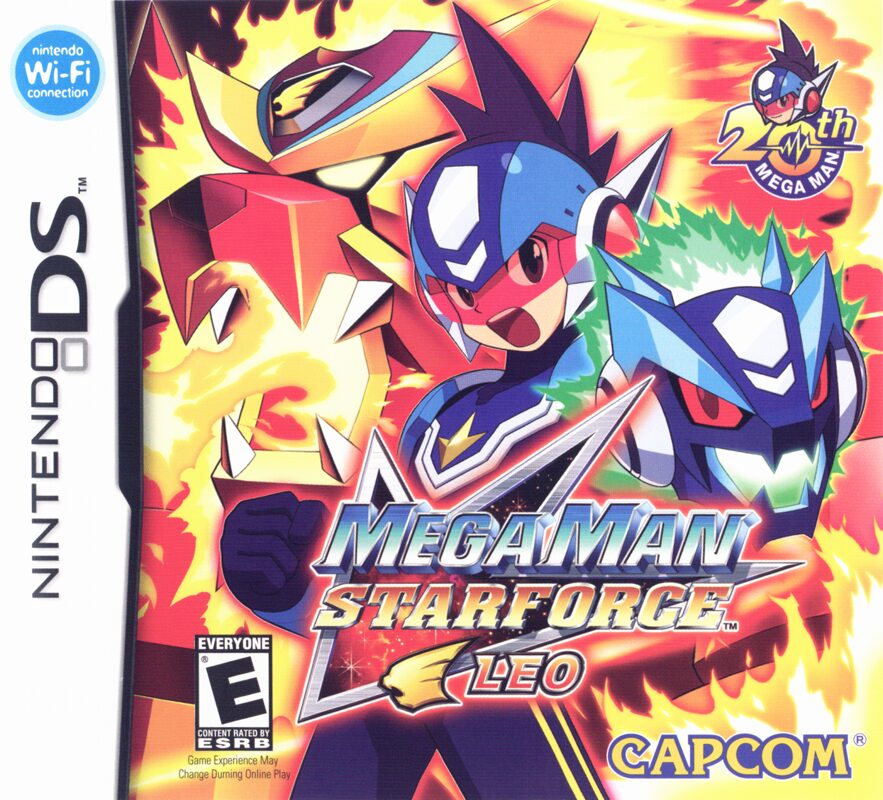
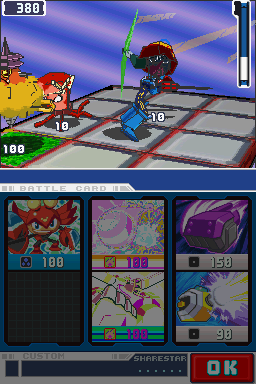
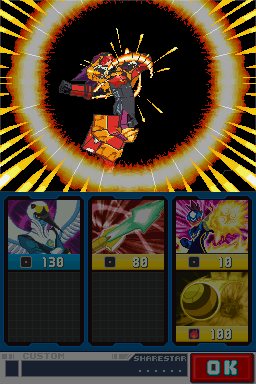
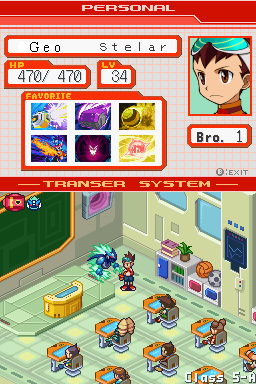
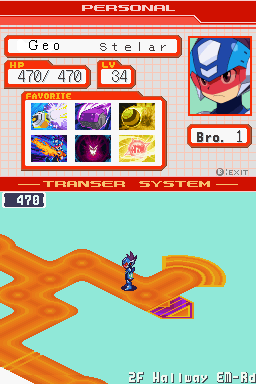
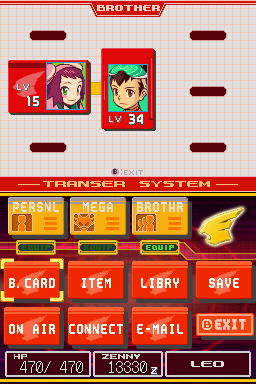
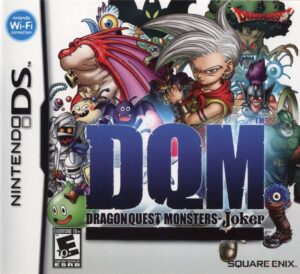
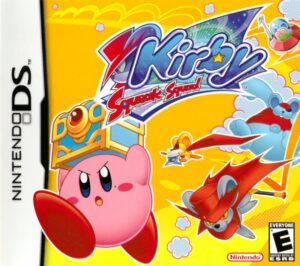
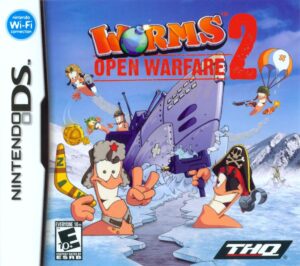
Reviews
There are no reviews yet.